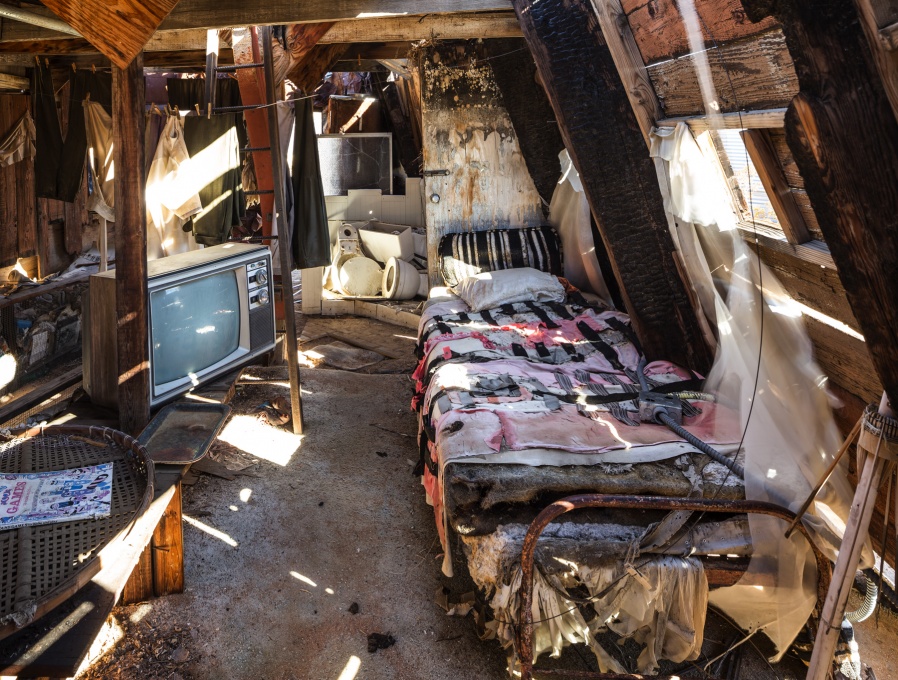Katie Grinnan on Noah Purifoy (2016)

“You have to make a journey to visit Noah Purifoy’s Joshua Tree Outdoor Museum in Southern California. Driving from the city to the desert, you feel the shift in terrain, the vast silent space, unforgiving weather, abandoned buildings, and wildlife. With that you get a sense of the community there, the thrift-store culture, and the way people recycle and repurpose every facet of their lives. Embedded within this community, Noah Purifoy built relationships and sourced the unwanted materials that would form his outdoor tour de force.
“The sculptural amalgam that Purifoy created in Joshua Tree consists of rickety geometries populated by balanced and arranged densities of discarded junk (toilets, tires, bowling balls, shoes, etc.) that absorbs all of the qualities inherent in the desert landscape. The Outdoor Museum also integrates Purifoy’s life previous to his move to the desert in 1989, at the age of 72, including the social injustices of the segregated South, his experience at Chouinard Art Institute (now California Institute of the Arts), the Watts Rebellion, and his years spent working as a social worker, educator, and civil servant. Purifoy’s idea of “recording lifetime experiences” is manifested in the social and relational aspects of his cast-off materials, architectural spaces, and transient objects.”
From Katie Grinnan “Material Communications: Noah Purifoy at LACMA,” X-TRA Contemporary Quarterly, 2016.
Image: Noah Purifoy, “Shelter” interior view, 1999, photo by Fredrik Nilsen, courtesy of the Noah Purifoy Foundation.